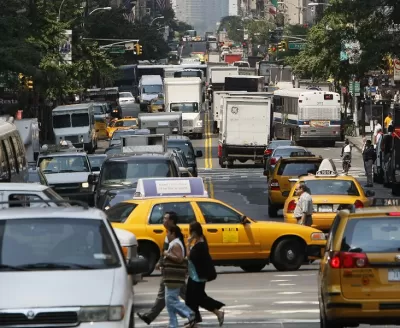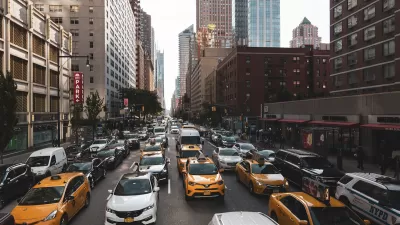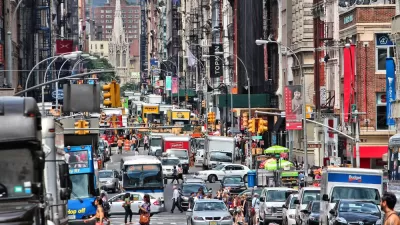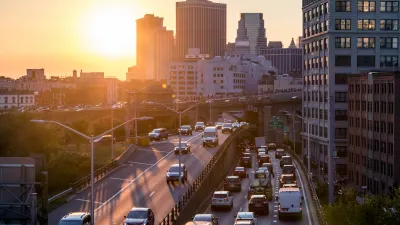After more than a decade of delays and reversals, congestion pricing is expected to take effect in Manhattan in late 2023 or early 2024.

The New York MTA earlier this week released the Environmental Assessment for the long-awaited congestion pricing scheme proposed for a section of Manhattan, reports Stephen Nessen for Gothamist.
The Central Business District Tolling Program Environmental Assessment (EA), which is available for public review, includes new details about how congestion pricing—more accurately described as cordon pricing—will work in Manhattan. “The congestion pricing assessment considered a range of tolling schemes for vehicles, including one that charged as little as $9 during peak hours,” explains Nessen. The high end of the range for private automobile owners could go to $23. “The tolls for commercial vehicles and trucks range from $12 to $82,” reports Nessen.
As for the other end of the equation, the congestion program is expected to raise $1 billion for improvements to public transit.
About 80% of the money raised would go toward subways and buses, with 10% to the Long Island Rail Road and 10% to Metro-North. The current capital plan stands at up to $56 billion, and revenue from the proposed congestion pricing plan would cover 30% of it. The MTA hopes to invest the $1 billion and generate $15 billion in total.
More background on the long road to this point for congestion pricing in New York City are included in the source article below, in addition to some discussion about the potential impact of congestion pricing on the public realm in the nation’s most populous city.
FULL STORY: MTA releases congestion pricing details, with fees that could be as high as $23 for drivers

Trump Administration Could Effectively End Housing Voucher Program
Federal officials are eyeing major cuts to the Section 8 program that helps millions of low-income households pay rent.

Planetizen Federal Action Tracker
A weekly monitor of how Trump’s orders and actions are impacting planners and planning in America.

The 120 Year Old Tiny Home Villages That Sheltered San Francisco’s Earthquake Refugees
More than a century ago, San Francisco mobilized to house thousands of residents displaced by the 1906 earthquake. Could their strategy offer a model for the present?

HSR Reaches Key Settlement in Northern California City
The state’s high-speed rail authority reached an agreement with Millbrae, a key city on the train’s proposed route to San Francisco.

Washington State Legislature Passes Parking Reform Bill
A bill that would limit parking requirements for new developments is headed to the governor’s desk.

Missouri Law Would Ban Protections for Housing Voucher Users
A state law seeks to overturn source-of-income discrimination bans passed by several Missouri cities.
Urban Design for Planners 1: Software Tools
This six-course series explores essential urban design concepts using open source software and equips planners with the tools they need to participate fully in the urban design process.
Planning for Universal Design
Learn the tools for implementing Universal Design in planning regulations.
Ada County Highway District
Clanton & Associates, Inc.
Jessamine County Fiscal Court
Institute for Housing and Urban Development Studies (IHS)
City of Grandview
Harvard GSD Executive Education
Toledo-Lucas County Plan Commissions
Salt Lake City
NYU Wagner Graduate School of Public Service





























